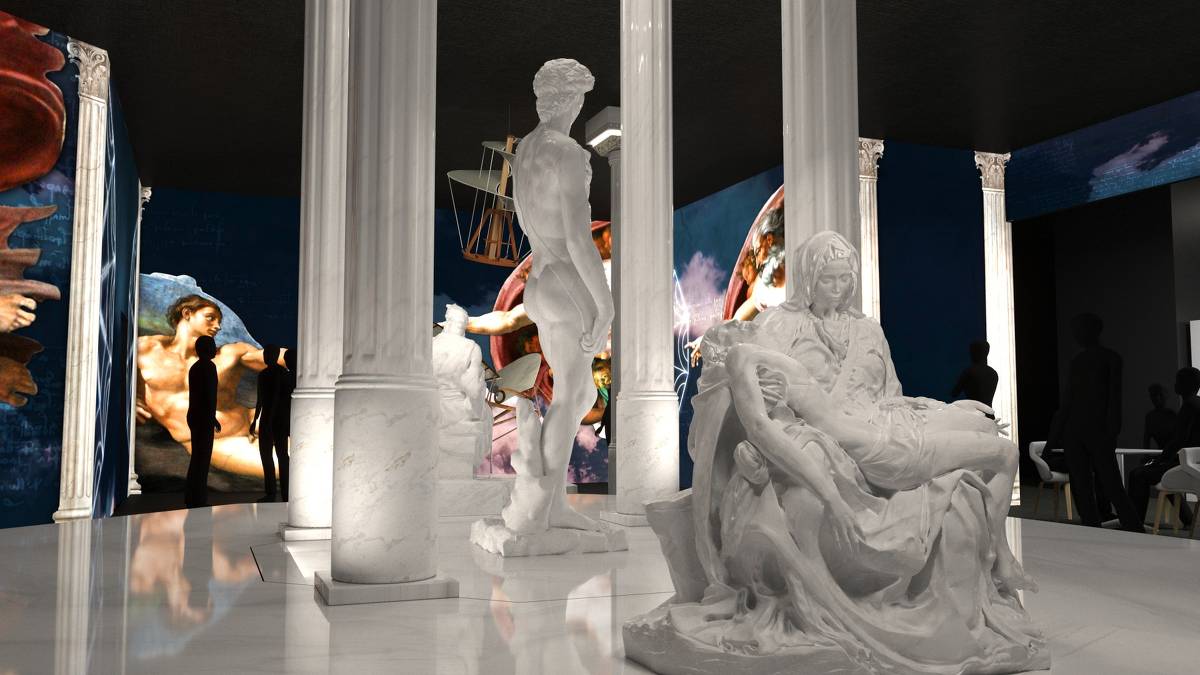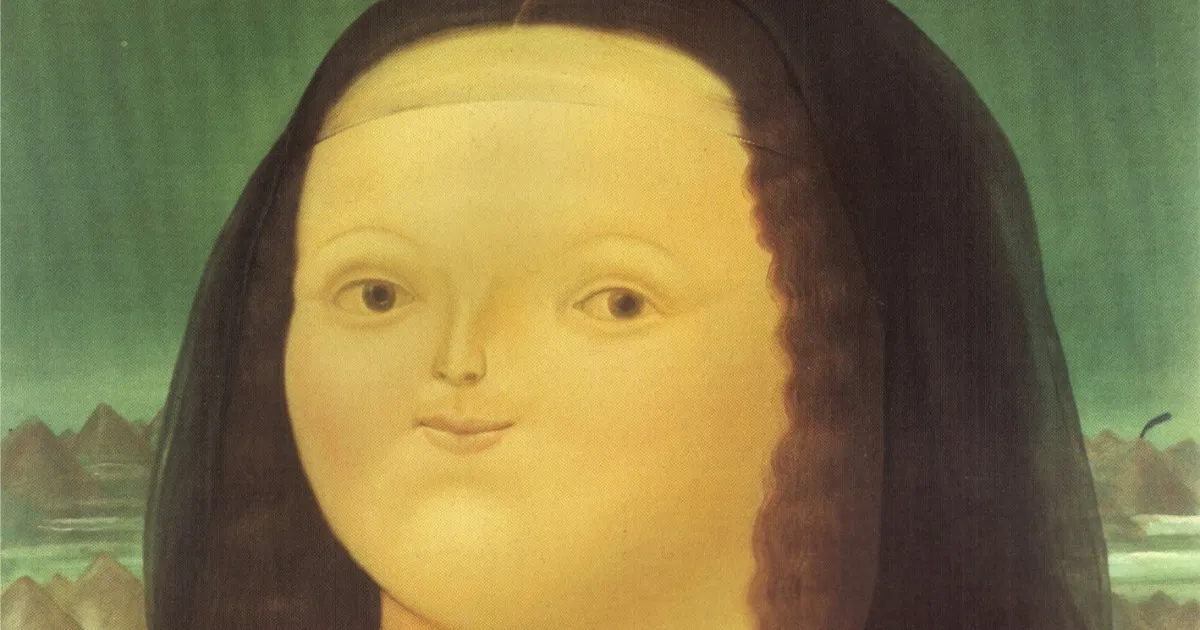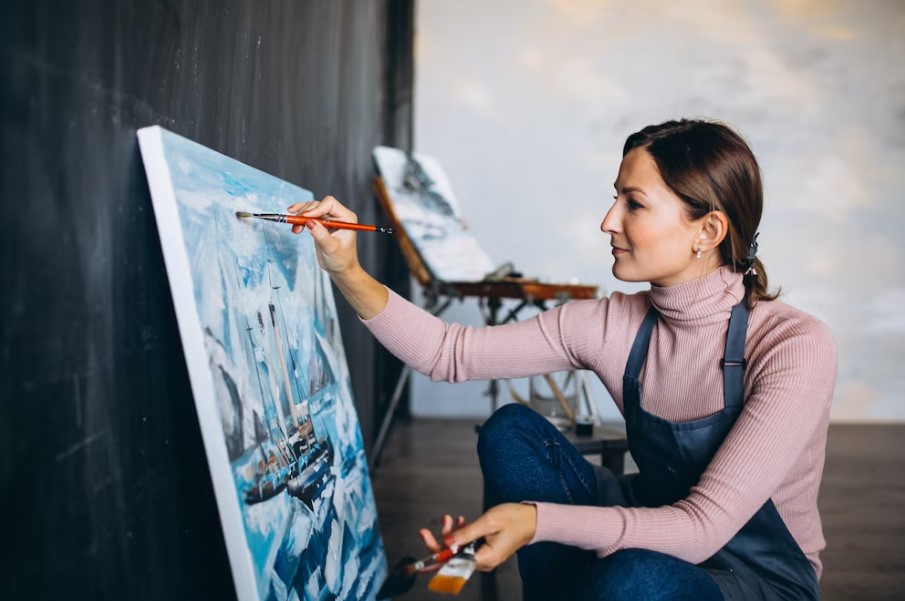Mastering layering and texture transforms classical painting from flat imagery into captivating, three-dimensional art that breathes life into every brushstroke and surface.
🎨 Understanding the Foundation of Layering in Classical Painting
The ancient masters understood something profound about painting: true visual depth emerges not from a single application of paint, but from careful, deliberate layers built upon one another. This fundamental principle distinguishes amateur work from professional artistry, creating paintings that seem to exist beyond the canvas surface.
Layering in classical painting involves applying multiple transparent or semi-transparent coats of paint, each contributing to the final composition’s richness and complexity. This technique, known as glazing in traditional oil painting, allows light to penetrate through layers and reflect back, creating an inner luminosity impossible to achieve with direct painting methods.
The optical phenomenon behind successful layering relies on light behavior. When light passes through transparent layers, it interacts with each stratum before reflecting back to the viewer’s eye. This creates visual depth perception similar to looking into water—you see not just the surface, but multiple levels beneath.
Historical Techniques That Built Masterpieces
Renaissance masters like Titian, Vermeer, and Rembrandt built their reputations on sophisticated layering techniques. They understood that patience and methodical application created paintings that would captivate viewers centuries later. These artists typically began with detailed underpainting, often in monochrome, establishing values and composition before introducing color.
The Flemish technique, perfected by Jan van Eyck, involved meticulous layering over a white ground. This approach created jewel-like colors and incredible detail. Artists would apply thin glazes of transparent color over dried underlayers, building complexity gradually. Some paintings required months or even years to complete, with artists waiting for each layer to dry completely before proceeding.
Italian Renaissance painters developed slightly different approaches, often working “fat over lean”—beginning with thin paint mixed with more solvent and progressively adding oil-rich layers. This technique prevented cracking and ensured structural integrity over centuries.
Essential Materials for Achieving Texture and Depth
Success in layering begins with understanding your materials. Not all paints behave identically, and choosing appropriate mediums dramatically impacts your results. Traditional oil paints remain the gold standard for classical layering techniques due to their slow drying time and versatile handling properties.
Quality pigments matter significantly. Earth pigments like raw umber, burnt sienna, and yellow ochre possess excellent transparency, making them ideal for glazing layers. Titanium white, while opaque and bright, should be used judiciously in layers to avoid losing transparency and depth.
Mediums serve as the bridge between layers. Linseed oil increases transparency and flow, making it perfect for glazing. Stand oil, a polymerized linseed oil, creates enamel-like surfaces and reduces brushstrokes. Turpentine or odorless mineral spirits thin paint for initial layers, while resins like damar or mastic add body and luminosity to glazes.
Building Your Texture Toolkit
Beyond basic brushes, classical painters employ various tools to create textural interest. Palette knives create impasto effects—thick, textured applications that catch light dramatically. Filbert brushes blend edges softly, while fan brushes create delicate textures for foliage or fabric.
Unconventional tools expand textural possibilities: natural sponges create organic patterns, cloth stamps produce fabric-like textures, and even fingertips can soften transitions and create unique surface qualities. The key lies in experimentation and understanding how each tool interacts with your medium.
The Strategic Underpainting Approach 🖌️
Every successful layered painting begins with a solid underpainting. This foundational layer establishes values, composition, and often the painting’s overall temperature. Classical painters typically chose between two primary underpainting approaches: grisaille and imprimatura.
Grisaille underpainting uses monochromatic tones, traditionally gray, to establish the full value range from darkest darks to brightest highlights. This method forces artists to think dimensionally before introducing color complexity. Once dry, transparent color glazes applied over grisaille create rich, dimensional hues impossible to mix directly on the palette.
Imprimatura involves toning the white canvas with a transparent wash of color—often raw umber, burnt sienna, or transparent oxide red. This eliminates the intimidating white surface and provides a middle value from which to work both lighter and darker. The warm undertone influences subsequent layers, creating color harmony throughout the painting.
Dead layer technique, another classical approach, involves blocking in basic colors at correct values without concern for blending or finish. This establishes color relationships and composition before refining details in subsequent layers.
Mastering the Art of Glazing for Luminous Depth
Glazing represents the pinnacle of classical layering technique. A glaze consists of transparent or semi-transparent paint thinned with medium, applied over a completely dry underlayer. This technique creates colors of extraordinary richness and complexity, as light penetrates through the glaze, reflects off lower layers, and returns through the transparent color.
The key to successful glazing lies in transparency. Use inherently transparent pigments like quinacridone, phthalocyanine, or traditional lake pigments. Mix these with glazing medium—typically linseed oil with a small amount of resin—to create thin, flowing applications that don’t obscure underlying work.
Apply glazes with soft brushes in thin, even coats. Multiple thin glazes produce better results than one thick application. Allow each glaze to dry completely—sometimes several days—before applying the next. This patience ensures proper bonding between layers and prevents mud or color dulling.
Color Theory in Layered Applications
Layering opens unique color opportunities unavailable through direct mixing. A blue glaze over yellow underpainting creates a different green than mixing blue and yellow on the palette. The layered version appears more luminous and dimensional because light interacts with each color separately.
Complementary glazes create subtle neutralization and atmospheric effects. A thin orange glaze over blue shadows warms and pushes them back spatially. Purple glazes over warm areas create convincing shadow transitions without muddiness.
Temperature shifts between layers enhance dimensional illusion. Warm underlayers with cool glazes create atmospheric perspective, mimicking how distant objects appear cooler and less saturated in nature.
Creating Physical Texture Through Impasto Techniques
While glazing creates optical depth, impasto builds actual physical texture. This technique involves applying paint thickly enough to retain brushstrokes or palette knife marks, creating surface variation that catches light and casts tiny shadows, adding another dimension to your work.
Strategic impasto placement guides viewer attention. Thick paint in focal areas—highlighted faces, foreground objects, or key compositional elements—draws the eye naturally. Thinner paint in less important areas recedes, creating spatial hierarchy beyond mere color and value.
Combine impasto with glazing for maximum effect. Thick, textured light areas glazed in shadow sections create convincing depth. The texture remains visible beneath transparent darks, suggesting form and surface quality simultaneously.
Timing matters with impasto. Apply thick paint in final or near-final layers to avoid cracking. The “fat over lean” rule becomes critical—later layers should contain more oil than earlier ones, ensuring proper flexibility and adhesion as the painting ages.
Scumbling: The Subtle Texture Technique ✨
Scumbling involves applying opaque or semi-opaque paint loosely over a dry underlayer, allowing the lower color to show through irregularly. This technique creates broken color effects and atmospheric qualities perfect for skies, distant landscapes, or suggesting age and weathering.
Unlike glazing’s smooth transparency, scumbling produces textured, varied applications. Use stiff brushes or dry-brush techniques, dragging paint lightly across the surface so it catches on the canvas texture while skipping recesses. This creates sparkle and visual interest impossible with smooth applications.
Scumbling with lighter, opaque colors over darker underlayers effectively suggests form emerging from shadow. This technique proved invaluable for masters painting flesh tones, creating the illusion of light on skin without losing dimensional shadows beneath.
Building Dimensional Form Through Value Layering
Convincing three-dimensionality emerges from accurately rendered value relationships more than any other factor. Layering allows methodical value development, building from general to specific, from large shapes to refined details.
Begin by establishing the full value range in your underpainting. Identify the darkest darks and lightest lights in your subject, then fill in the value steps between them. This creates the dimensional foundation upon which color layers will build.
As you add color layers, maintain value accuracy. A common mistake involves losing value contrast as colors accumulate. Regularly check your work in grayscale—through a red filter, black and white photograph, or squinting—to ensure dimensional form remains clear beneath color complexity.
The Progression from General to Specific
Classical layering follows natural artistic progression. Initial layers address broad shapes, overall composition, and major value relationships. Middle layers refine form, develop color relationships, and establish secondary details. Final layers add finishing touches, highlights, and minute details that bring paintings to life.
This progression prevents premature detail work in areas that may change during development. It also ensures that details added late maintain sharpness and clarity, sitting atop earlier layers rather than becoming buried or muddied.
Managing Drying Time and Technical Considerations
Successful layering requires patience and technical understanding. Oil paint drying time varies dramatically based on pigment chemistry, medium additions, paint thickness, and environmental conditions. Some pigments dry quickly—earth colors, cobalt, and manganese—while others remain tacky for days—zinc white, alizarin crimson, and ivory black.
Accelerate drying by adding alkyd mediums or driers sparingly. Work in warm, well-ventilated spaces, as heat and air circulation speed oxidation. However, excessive driers cause brittleness over time, so use them judiciously.
The “touch dry” stage—when paint no longer feels tacky—differs from fully cured. While you can apply new layers over touch-dry paint, full curing takes months. This delayed curing allows paint layers to integrate partially, creating stronger interlayer bonding than completely cured surfaces would permit.
Edge Control and Transitions in Layered Painting
Edges communicate spatial relationships and focal hierarchy. Hard edges advance and attract attention; soft edges recede and connect forms. Layering offers unique edge-control opportunities unavailable in direct painting methods.
Create soft transitions by glazing transparent darks over light areas or scumbling lights over darks. The underlying layer shows through, creating gradual transitions without physical blending. This technique produces luminous, vibrant transitions superior to direct wet-into-wet blending.
Reserve hardest edges for focal areas, blending peripheral edges softly. This mimics human vision’s selective focus, making paintings feel more naturalistic and directing viewer attention to intended subjects.
Atmospheric Perspective Through Strategic Layering 🌫️
Distance in landscape painting emerges from understanding atmospheric perspective—distant objects appear cooler, less saturated, and lighter in value than near objects. Layering achieves these effects convincingly through strategic color application.
Build distant elements with cool, thin layers allowing underpainting to influence final appearance. Apply warmer, thicker, more saturated paint for foreground elements. This contrast creates convincing depth even in relatively flat compositions.
Layer blue or violet glazes over distant landscape elements to push them back spatially. These cool transparent layers mimic atmospheric haze naturally occurring in nature, enhancing the illusion of miles between foreground and background.
Troubleshooting Common Layering Challenges
Even experienced painters encounter difficulties with layered techniques. Muddy colors often result from overworking or layering complementary colors without allowing sufficient drying. Solution: work with greater patience, allowing complete drying between layers, and use glazes rather than direct overpainting to modify colors.
Cracking occurs when paint layers have incompatible flexibility—typically from violating the “fat over lean” principle. Prevent this by ensuring later layers contain equal or greater oil content than earlier ones, and avoid painting thick layers over thinly-applied ones.
Loss of luminosity happens when too many opaque layers accumulate, blocking light penetration that creates glowing depth. Remedy this by incorporating transparent glazes between opaque layers and being more selective about paint opacity throughout the process.
Practicing and Developing Your Layering Skills
Mastery emerges from deliberate practice. Begin with simple subjects—spheres, cubes, or single objects—focusing entirely on building dimension through layers. This focused practice develops understanding without compositional complexity distracting from technical learning.
Create layering studies exploring different approaches. Paint the same subject using various underpainting methods, different glazing sequences, or alternative impasto placements. Compare results to understand how technical choices affect final appearance.
Document your process photographically at each stage. This creates valuable reference showing how layers build toward finished work, revealing which approaches succeed and which need adjustment in future paintings.
Bringing It All Together for Stunning Results 🎭
True mastery combines multiple layering techniques within single paintings. Use impasto for highlighted foreground elements, glazing for luminous shadows, scumbling for atmospheric effects, and careful value layering throughout. This technical variety creates visual richness engaging viewers at multiple levels.
Remember that technique serves artistic vision, not vice versa. The greatest classical painters used layering to communicate ideas, emotions, and observations—not merely to demonstrate technical prowess. Let your subject matter and artistic intentions guide technical choices rather than applying techniques arbitrarily.
As you develop confidence with layering and texture, your paintings will acquire that indefinable quality distinguishing professional work—a sense of depth, luminosity, and surface richness that commands attention and rewards prolonged viewing. The journey from understanding these principles to fluent application requires patience and practice, but the results justify the investment.
The classical masters spent lifetimes perfecting these approaches, and their works continue inspiring artists centuries later. By studying their methods and adapting them to your unique vision, you join a tradition spanning generations, creating paintings with the dimensional presence and technical excellence characteristic of truly masterful art.
Toni Santos is a visual chronicler and historical researcher who explores the lost language of healing through forgotten instruments and ancient medical design. With a delicate blend of curiosity and reverence, Toni uncovers the mysterious tools once used in temples, apothecaries, and folk practices—objects that echo a time when healing was both art and ritual.
Rooted in a fascination with the intersection of medicine, myth, and craftsmanship, his work traces how past civilizations understood the body, spirit, and cosmos through tools now obscured by time. From vibrational tuning forks and herbal infusion vessels to symbolic scalpels carved with protective motifs, Toni’s visual storytelling gives new life to the technologies that once held deep cultural and curative power.
With a background in historical illustration and material culture, Toni reconstructs these instruments with artistic precision—offering not just images, but narratives that reveal the beliefs, fears, and hopes embedded in the tools of care.
As the visionary behind Vizovex, Toni shares curated archives, interpretive essays, and artifact-inspired artworks that help audiences reconnect with the ancestral roots of healing and the poetic devices once used to restore balance.
His work is a tribute to:
The craftsmanship of early healing technologies
The spiritual symbolism behind medical instruments
The intimate connection between body, tool, and ritual
Whether you’re an enthusiast of forgotten sciences, a student of holistic traditions, or a seeker of the obscure, Toni welcomes you into a world where healing was sacred, and every tool told a story—one wound, one charm, one cure at a time.





